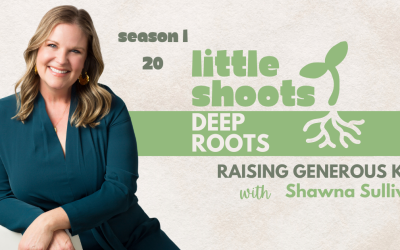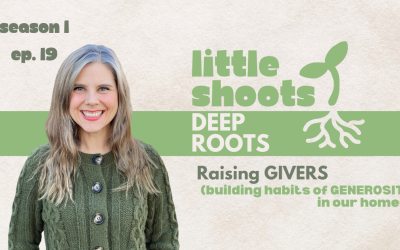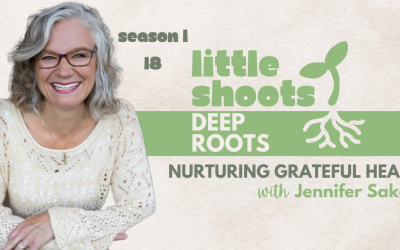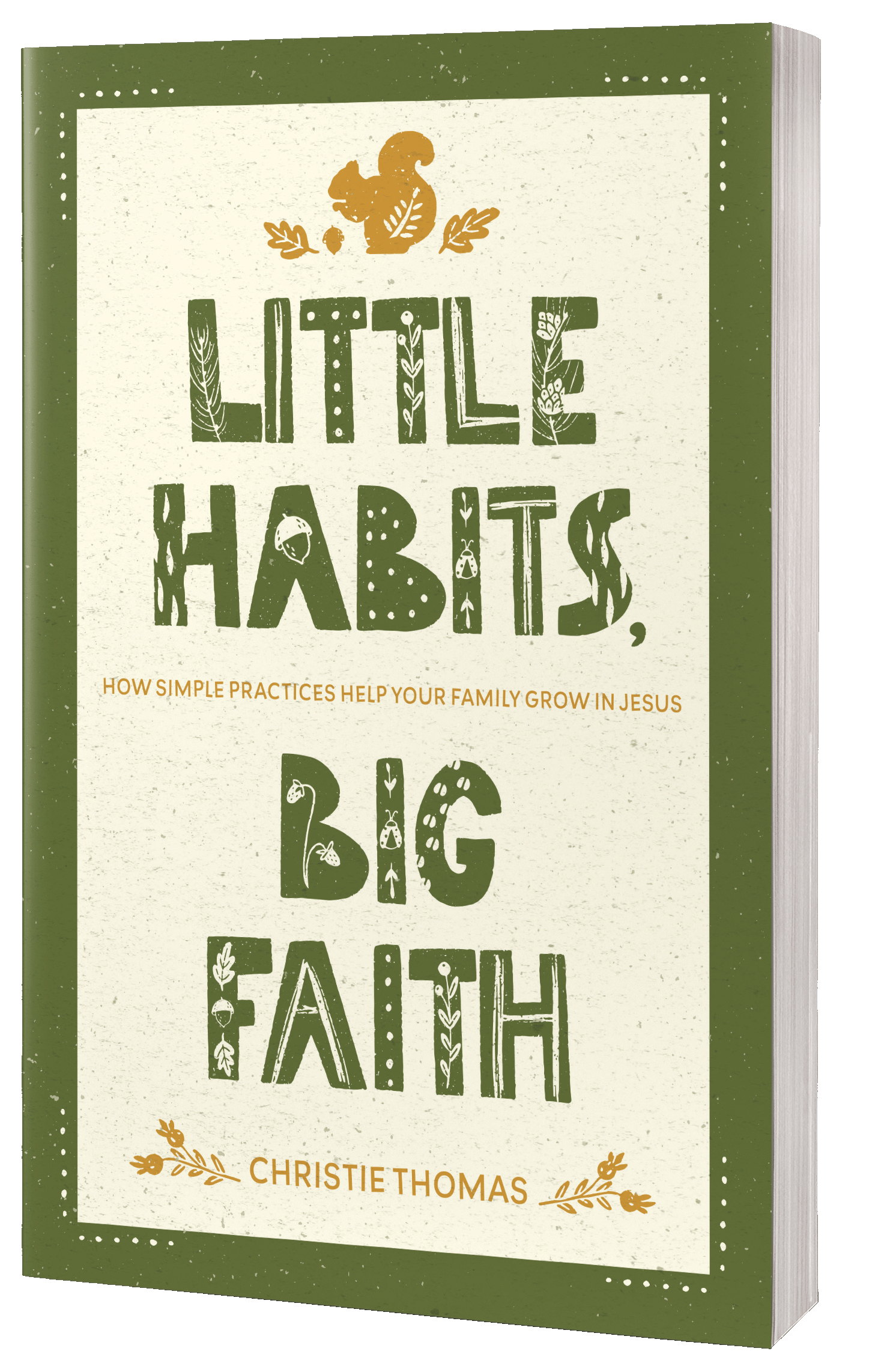Ever wondered how to actually create meaningful Sabbath rhythms, even with reluctant kids and packed weekends? Eryn and Christie share honest stories, practical ideas, and encouragement to help you rediscover Sabbath as a real gift, one that brings joy, connection, and refreshment (not just rules and guilt!).
Whether your family’s rest day is more chaos than calm right now, or you’re longing to try simple, doable Sabbath practices, this episode will equip you with inspiration and real-world tools to start small, tweak what’s not working, and grow new family habits of rest…rooted in God’s delight for you.
Key takeaways to cultivate more restorative rhythms:
- Start small and make it your own. Eryn encourages families to begin with what’s manageable—perhaps setting aside just a few hours, making a “stop” and “delight” list, and celebrating with simple joys like a special meal. Sabbath isn’t about perfection; it’s about intentional connection and refreshment, unique to every household.
- Rest is woven into creation. Eryn points out that even the busiest creatures—like hummingbirds—have built-in restful cycles (like torpor), reminding us that God designed both work and rest as essential parts of life.
- Sabbath is a practical act of faith. Like the Israelites learning in the wilderness, embracing regular Sabbath means trusting that God will provide—allowing us to stop striving, delight in our lives, and see our productivity actually increase over time.
📚 FOLLOW-UP RESOURCES:
- 📚 Eryn’s book, The Nature of Rest
- 🎧 Nat Theo podcast (for kids)
- 🛏️ The Family Sabbath Guide
Subscribe on your favorite listening platform for practical tips, real parent interviews, and encouragement as we become faith gardeners together!
📝SUMMARY
In today’s fast-paced world, finding moments of true rest can feel almost impossible—especially for families balancing work, homeschooling, and daily demands. In a recent episode of Little Shoots Deep Roots, I sat down with Eryn Lynum, author of The Nature of Rest and host of the Nat Theo podcast, to explore how both God’s Word and the natural world teach us about intentional, restorative rest—particularly through the practice of Sabbath.
Rest in Creation, Scripture, and Real Life
Eryn opens by sharing her background as a master naturalist and homeschooling mom in the Rocky Mountains of Colorado, weaving together her love for Scripture and nature. She explains her approach of “natural theology”: “I saw that in the scriptures, God and Jesus taught biblical truth using natural materials—everything He had fashioned together in creation.” This insight shaped both her podcast and her book.
As Eryn dove into practices of rest with her own family, she was struck by its prevalence in Scripture. Words like “rest,” “waiting,” “abiding,” and “dwelling” are woven throughout. But she also noticed a powerful parallel in nature. Her favorite example is the hummingbird—an image of constant motion, yet sustained by a unique kind of daily rest called “torpor,” a mini-hibernation state where they drop their body temperature and heart rate dramatically. “That regular, rhythmic rest is what allows the hummingbird to go about all of its God-given work,” Eryn notes.
Sabbath: From Survival to Thriving
Christie and Eryn discuss how rest, and Sabbath specifically, was built into God’s design from the very beginning. Adam’s first full day after creation was a day of rest, highlighting how, “We were always meant to begin from rest and from there go forward into our work.”
In the Old Testament, God taught the Israelites to rest by providing a rhythm of manna—forcing them to plan ahead and cease from gathering every seventh day. Eryn explains that this pattern continues in the New Testament, with Jesus modeling withdrawal to “quiet, solitary places” (the Greek word “eremos”), and encouraging his disciples to do the same.
“We were created for fruitful work. Rest is not idleness—it is productive, it is refreshing, it is fruitful,” Eryn reminds us. True Sabbath gives us the physical, emotional, and spiritual refreshment we need to do good work.
Rest vs. Distraction in a Digital Age
The conversation acknowledges the challenge of real rest in a world full of entertainment and endless scrolling. Christie notes, “Entertainment isn’t necessarily restful—it’s more like a distraction.” Eryn agrees, pointing out that distraction can be draining rather than restorative. Instead, Sabbath rest involves “inspiring activities,” such as reading, journaling by hand, walking outdoors, connecting with neighbors, or enjoying a leisurely meal.
The act of Sabbath is more than just a break—it’s about “stop and delight.” Eryn references the Hebrew root for Sabbath, “Shabbat,” which means both “to stop” and “to delight.” She encourages families to not only cease from regular tasks, but to actively enjoy their accomplishments, God’s creation, and one another.
Practical Steps for Families
So how can busy families start practicing Sabbath rest? Eryn’s advice is both realistic and encouraging:
- Start Small: Begin with a few dedicated hours if a full day seems daunting. Protect this time fiercely.
- Make Two Lists: A “Stop List” of things you’ll set aside (work, chores, technology) and a “Delight List” of activities that truly refresh your family (nature walks, board games, creative projects, good food).
- Embrace Imperfection: Sabbath won’t always be perfect. There will be seasons of pushback, “Sabbath ruts,” or unexpected interruptions. That’s normal—and precious.
- Create Rhythms: Build in daily “Selah pauses”—intentional moments of reflection or silence—and let Sabbath be a built-in catch-all for quality time and joy.
Eryn reminds us that stepping into Sabbath is ultimately an act of trust, echoing God’s challenge to the Israelites: “Stop and trust me.” Her family, despite doubts, discovered more productivity and joy by protecting a day for rest.
If you’re looking for a practical guide, Eryn offers a free Family Sabbath Guide at erinlynum.com/familysabbath.
Final Encouragement
True rest isn’t just possible in our busy modern world—it’s essential. It’s not about living up to someone else’s ideal, but about discovering the unique rhythm that helps your family “stop and delight.” As Eryn says, “Take a risk on rest. God’s design works, and He will bring great fruit from it.”









0 Comments